Formulas of Polygon in Quant section
Polygon
A closed figure in a plane with 3 or more sides and common endpoints.
Polygons are two-dimensional geometric figures with these characteristics:
- They are made of straight line segments.
- Each segment touches exactly two other segments, one at each of its endpoints.
- They are closed they--divide the plane into two distinct regions, one "inside" and the other "outside" the polygon.
These shapes are polygons:

- These shapes are not polygons:

Types of polygons based on the number of sides
- Quadrilateral: 4 sides

- Pentagon: 5 sides

- Hexagon: 6 sides
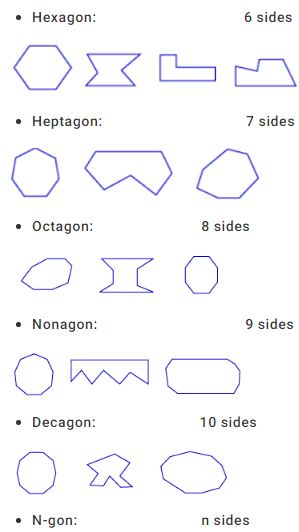
Polygons with more than 10 sides are not usually given special names. A polygon with 11 sides is described as an 11-gon, a polygon with 12 sides as a 12-gon, and so on. Each of the polygons below is a 17-gon.

- A regular polygon is a convex polygon with all sides and angles congruent.
Convex pentagon Concave pentagon
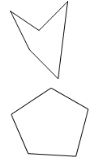
A. Area of a regular polygon =
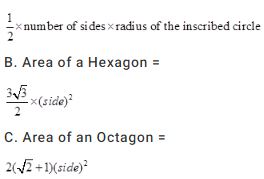

Example 1: Find the area of a regular hexagon whose side measures 9 cm.
Solution:
Area of a regular hexagon=
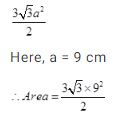

sq. cm = 210.4 sq. cm approx
Example 2: Find the nearest metre the side of a regular octagonal enclosure whose area is 1 hectare.
Solution: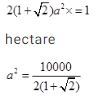

sq.m or,

2071 sq. approx..
a = 46 metres approx
- The sum of the angles of a triangle is 180o. What is the sum of the angles of a quadrilateral? Break polygon up into triangles to get formula:
Sum of angles = 180(n - 2)
- What is the sum of the angles of a pentagon? = (540)
- What is the sum of the angles of a nonagon? = (1260)
- If a pentagon is regular what is the measure of each interior angle?= (108)
No comments:
Post a Comment